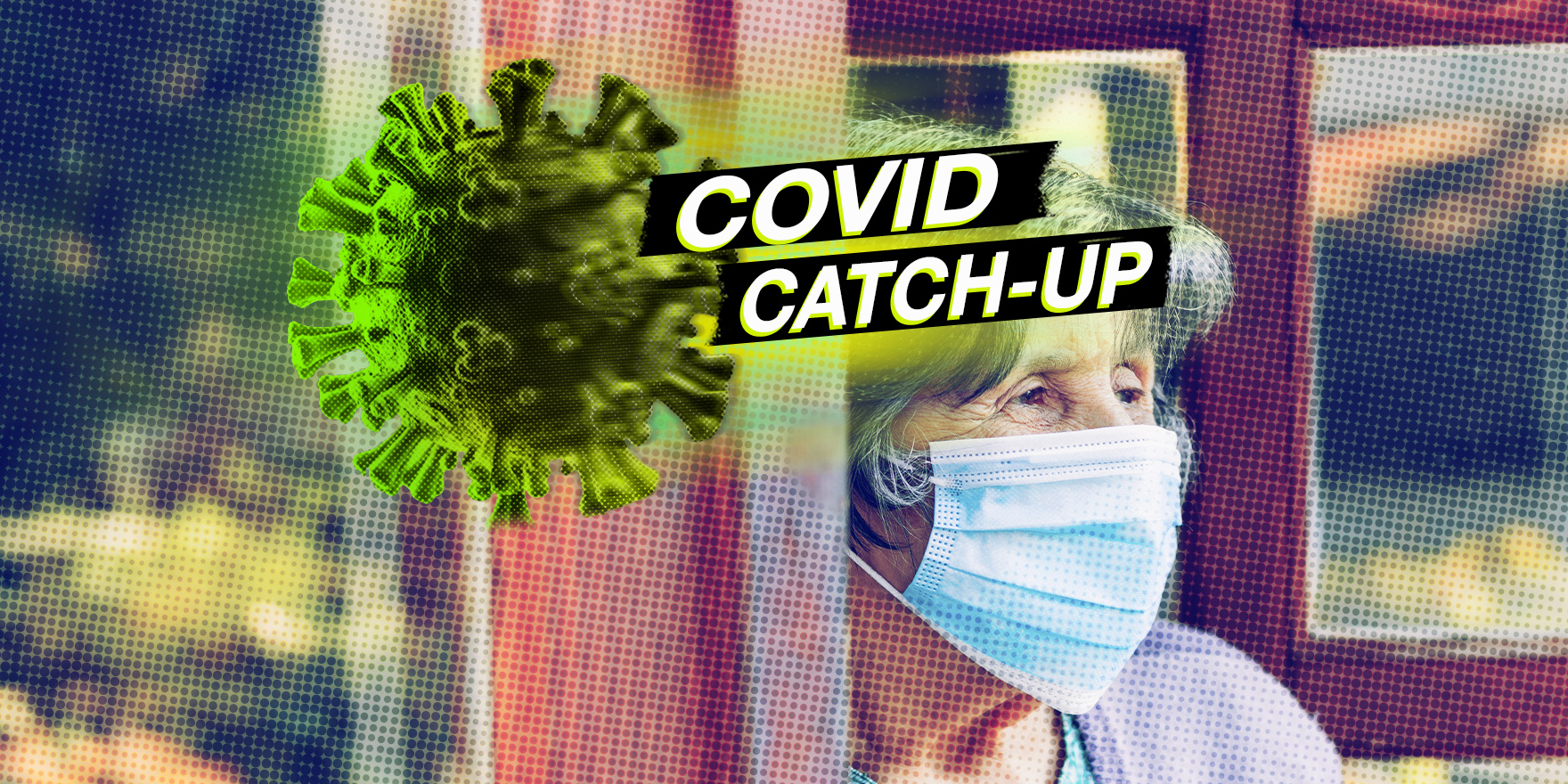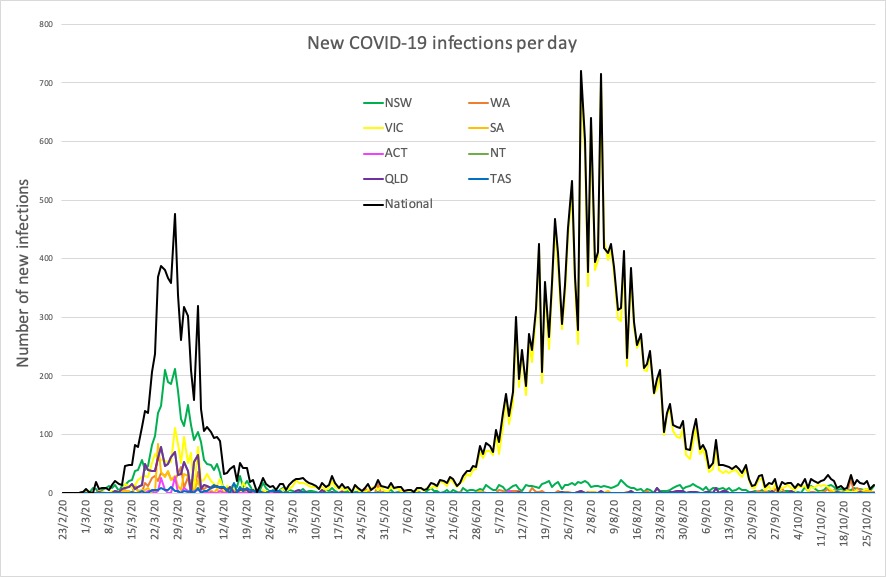And just weekly tests in low-risk settings may achieve the same result, a modelling study suggests.
Welcome to The Medical Republic’s COVID Catch-Up.
It’s the day’s COVID-19 news in one convenient post. Email bianca@biancanogrady.com with any tips, comments or feedback.
28 October
- Twice-weekly testing of high-risk healthcare workers could prevent outbreaks, study suggests.
- Residential care homes associated with significantly higher risk of COVID-19 mortality.
- Latest confirmed COVID-19 infection numbers from around Australia.
- Twice-weekly testing of asymptomatic workers in high-risk occupations such as healthcare could prevent COVID-19 outbreaks, a modelling study suggests.
Published in Clinical Infectious Diseases, the study modelled different frequencies of routine testing in different transmission scenarios: for example, daily testing in a scenario with high transmission rates.
They found that testing with RT-PCR at least twice a week was needed to bring the reproduction number – the number of individuals infected per index case – down below 1 in high-risk healthcare environments, such as hospitals or long-term care facilities. In lower risk settings, or in a context where there is low incidence of community transmission, once-weekly testing alongside other infection control measures could be enough to achieve the same goal. - Living in a residential care home is associated with a four-fold higher risk of COVID-19 mortality among the elderly, according to a population-based study from Sweden.
Researchers used data from the cause-of-death register for more than 274,000 Stockholm residents aged 70 of over to look for associations between housing characteristics, neighbourhoods and COVID-19 deaths.
The results, published in The Lancet Healthy Longevity, found the highest mortality levels were among individuals living in care homes. Those in the most crowded living conditions (less than 20m2 per individual) had a two-fold higher risk of COVID-19 mortality than those in the least crowded conditions (more than 60m2 per individual). The study found higher mortality among those living with someone of working age or living alone, compared to those living with someone aged 66 years or older. COVID-19 mortality was also higher in more densely populated areas of the city and in those with a higher incidence of COVID-19. - While 10 of NSW’s 12 confirmed cases yesterday are in returned travellers in hotel quarantine, the state’s health department has issued a public health alert for south-west Sydney after SARS-CoV-2 RNA fragments were detected in wastewater at treatment plants in Glenfield and Quakers Hill.
The closest testing clinics to the area are at Campbelltown Hospital, the Julia Reserve Community Centre in Oran Park, and at the Ash Road Sporting Complex in Prestons.
Victoria has had its second consecutive day with no new cases, and if you want to get a sense of just what an achievement that has been, check out these graphics from the Guardian comparing Australia’s second wave with second waves elsewhere in the world.
Here are the latest confirmed COVID-19 infection numbers from around Australia to 9pm Tuesday:
National – 27,541 with 905 deaths
ACT – 114 (0)
NSW – 4398 (12)
NT – 33 (0)
QLD – 1167 (0)
SA – 494 (0)
TAS – 230 (0)
VIC – 20,341 (0)
WA – 764 (2)



